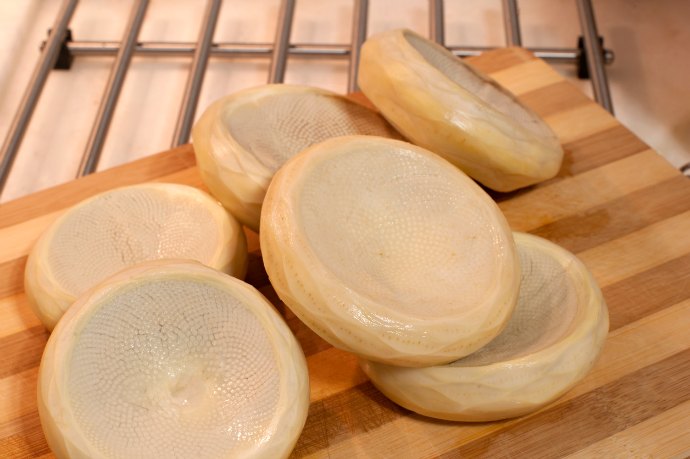Eat Seasonally in April: How to Cook Artichokes
Posted by Julie on Apr 4th 2017
Artichokes might be the most intimidating of all the items in the produce section. But once you get past their tough exterior, artichokes are both tender and delicious. They're also currently in season, so there's never been a better time to learn how to cook artichokes.
From choosing a fresh artichoke to navigating your way through the layers of leaves, we'll cover everything you need to know to prepare and serve artichokes at home.
How to Cook Artichokes: Understanding and Selecting Artichokes
Artichokes are part of the same family as thistles. They're actually a flower bud, picked prior to blooming. The photo below shows two artichokes in bloom:

The outer leaves are tough and have thorny tips. The outside layer of the stem is also tough. The leaves grow thinner, closer together, and more tender near the middle of the artichoke, where you'll find the heart. The "choke" is an inedible, stringy mass in the center of the artichoke heart.
In fact, much of an artichoke is inedible. While asparagus has been considered a delicacy, artichokes are even more so. Artichokes require specific growing conditions, and they produce relatively little food value compared to other crops.
When choosing artichokes, look for tight, green leaves that squeak when they rub against each other. Artichokes will keep in the refrigerator for about five days, so plan to use them fairly soon after buying.
How to Cook Artichokes: Part 1, Serving the Whole Artichoke
While the heart is the most tender and sought-after part of the artichoke, the leaves and stem are also partly edible. Here's how to get the most out this delicacy as you possibly can.
You'll need stainless steel knives, and a peeler and kitchen shears with stainless steel blades. Plus, you'll want to cook the artichokes in a stainless steel or glass pot. Metals like iron and aluminum react with artichokes to turn them unappetizing colors. We'll offer specific product recommendations at the end of this post.
First, pluck and discard the tough outer leaves. Next, trim the end of the stem. You can cut it flush with the bottom of the artichoke so it sits flat. Or you can peel away the top green layer and eat the inside of the stem too.
Then use a large serrated knife to chop off the top of the artichoke, revealing the interior cross-section. You can see how many layers of leaves there are, along with the top of the choke which covers the heart.

Finally, trim the thorny tops of the outer leaves with kitchen shears. This step is primarily aesthetic, since the edible part of the leaves is at the bottom.
After steaming or boiling your artichoke in lemon water, or roasting it with lemon squeezed on top, it's time to eat. Check out the video below from Ocean Mist Farms to see just how simple it is to enjoy a whole artichoke.
How to Cook Artichokes: Part 2, Serving the Artichoke Heart
It takes more time and effort to get to the artichoke heart, but the results are worth it.
In addition to the prep tools listed in part 1 above, you'll also need lemon halves or a bowl of water mixed with lemon juice.
Start as you would prepare a whole artichoke for serving, by removing the outer leaves and cutting off the top of the artichoke. But in this case, you'll use a paring knife to cut away the rest of the leaves surrounding the heart. Go slowly and be careful not to cut deeper than necessary. Rub the artichoke with lemon halves as you work, to keep it from browning.

This guide from Serious Eats includes multiple photos to help you understand what your artichoke will look like as you pare away the leaves. It also shows how to scoop out the choke and clean up the last bits of the heart.
After each artichoke heart is finished, put it into the bowl of lemon water to keep it from browning before cooking. (After all this work, you are going to cook more than one artichoke heart, right?)
How to Cook Artichokes: Essential Tools
As we discussed above, stainless steel is key when working with artichokes. Use a serrated knife to lop off the top of the artichoke. While you can use a bread knife, we're partial to utility knives, which are also great for other vegetables and fruits, as well as smaller loaves of bread.
For detail work, you'll want a paring knife. When working with artichokes, we advise the classic or sheep's foot blade shape over the bird's beak shape.
Finally, if you don't already have a pair of kitchen shears, you may soon wonder how you lived without them. For all those kitchen tasks where you know you shouldn't use your good, sharp knives, shears are perfect.
 Free shipping over $49
Free shipping over $49










